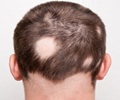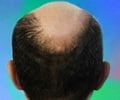Immune regulatory T-cells (Tregs) shown to be critical for activation of skin stem cells involved in hair growth.
- Alopecia is a common disease leading to hair loss from the scalp, face and eyebrows, whose cause remains unknown.
- Current study has identified the role of regulatory T-cells (Tregs) in promoting hair growth by triggering stem cells in the hair follicles of the skin.
During the course of his earlier research, Rosenblum was interested in delineating the role of resident Tregs in overall skin health. He and his team developed a technique to remove Tregs from the skin of mice in order to study them better. To their surprise, they noticed that hair from these areas never grew back again.
This prompted Dr Rosenblum and his team to delve deeper into the matter and investigate whether Tregs could possibly have a role in hair growth.
Confirming The Suspicions About The Role of Tregs In Hair Growth
The current study was led by post-doctoral fellow Niwa Ali. The significant observations made by his team in the course of their research included the following:
- Imaging studies revealed a close association between stem cells in hair follicles and Tregs.
- At the time of hair follicle regeneration, there was a spurt in the number of Tregs to almost threefold.
- To further give weight to their theory, they found that removal of Tregs within 3 days from a patch of shaved skin, blocked hair regrowth. This is normally the time period when the stem cells are activated to regenerate hair follicles.
- Removal of Tregs after 3 days, however, from the patch of shaved skin had no effect on hair regrowth as hair growth had already begun.
- The role of Tregs in promoting hair growth was not in any way related to their role in regulating skin inflammation. The stem cells were triggered by a separate pathway called Notch pathway whose signaling in hair follicle cells was found to be reduced when Tregs were removed.
- Replacing Tregs in the skin with the Treg signaling protein called Jagged-1 reestablished the Notch pathway signaling of hair follicle cells and promoted hair growth.
Tregs are immune regulatory T cells that are predominantly found in lymph nodes. They help the immune system to distinguish between self proteins that should be left alone and not attacked, and harmful foreign antigens which have to be dealt with summarily by the immune system.
Some Tregs which reside in host tissues other than lymph nodes, for instance the skin, help develop tolerance to healthy skin bacteria in mice and also secrete substances that help in wound healing up to adulthood.
Scope of Tregs Role In Promoting Hair Growth
Alopecia or hair loss is a common occurrence and is associated with patches of hair loss from scalp, eyebrows and face.
Further studies by Dr Rosenblum have established that genes shown to be associated with hair loss were mostly related to Tregs. Treatment aimed at improving Treg function could help in treating alopecia.
Future Research Plans
Rosenblum plans to further study the role of skin Tregs in wound healing as the same hair follicle stem cells are stimulated to regenerate following skin injury.
"We think of immune cells as coming into a tissue to fight infection, while stem cells are there to regenerate the tissue after it's damaged," he said. "But what we found here is that stem cells and immune cells have to work together to make regeneration possible.
In conclusion, further research to gain a better understanding on the role of Tregs in hair growth could generate newer therapeutic options in the promotion of hair growth.
Reference:
- Niwa Ali, Bahar Zirak, Robert Sanchez Rodriguez, Mariela L. Pauli, Hong-An Truong, Kevin Lai, Richard Ahn, Kaitlin Corbin, Margaret M. Lowe, Tiffany C. Scharschmidt, Keyon Taravati, Madeleine R. Tan, Roberto R. Ricardo-Gonzalez, Audrey Nosbaum, Marta Bertolini, Wilson Liao, Frank O. Nestle, Ralf Paus, George Cotsarelis, Abul K. Abbas, Michael D. Rosenblum. “Regulatory T Cells in Skin Facilitate Epithelial Stem Cell Differentiation.” Cell (2017). DOI: http://dx.doi.org/10.1016/j.cell.2017.05.002
















